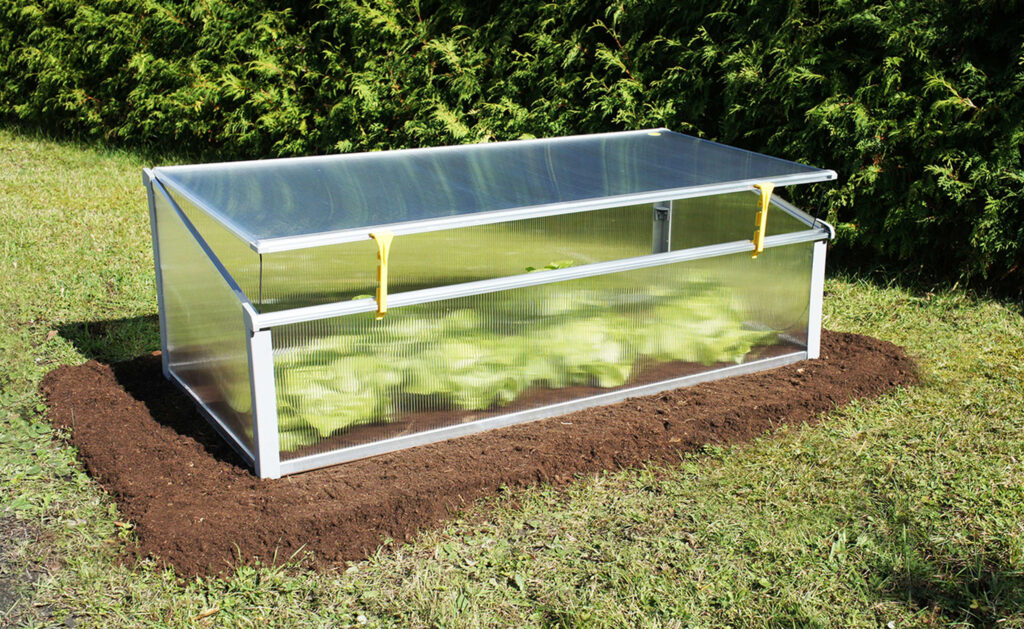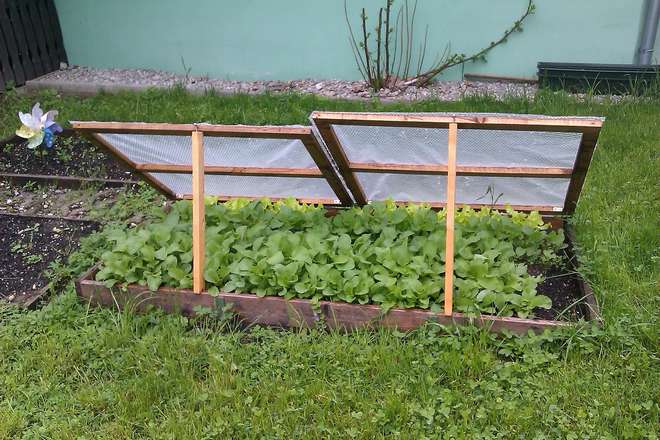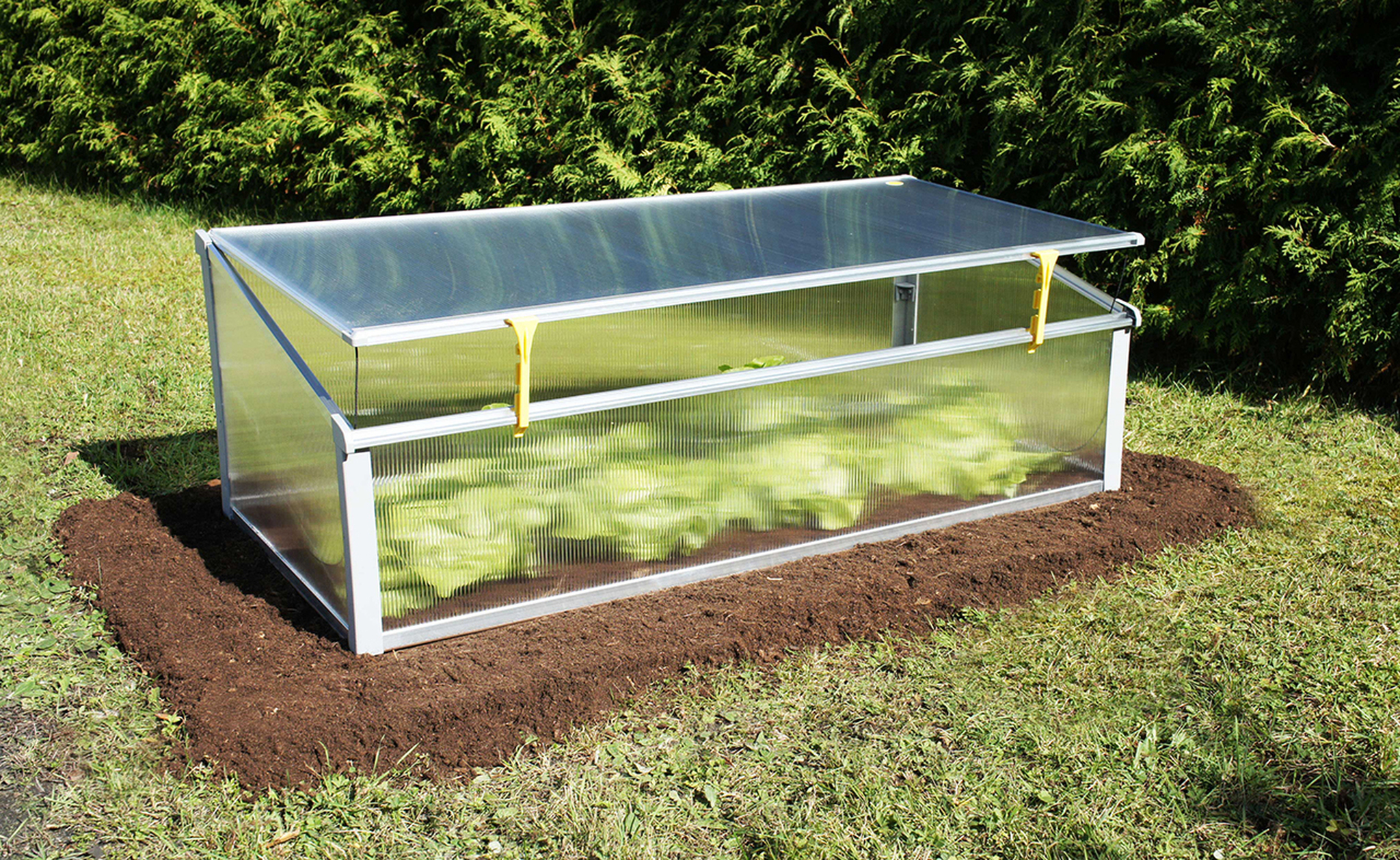
Having a well-exposed frame offers many advantages. In cold climates, this equipment effectively protects the coldest vegetables all winter long and allows early spring sowing to start. In a mild climate, the Cold Frame also allows you to harvest greenery (lettuce, radish, lamb’s lettuce, spinach) almost all year round!
The Nantes chassis
In the 1820s and 1830s, Nantes market gardeners specialized in growing early vegetables. Their early harvests are made possible by the use of frames equipped with a glass cover.
In addition to growing vegetables in greenhouses , these frames, which are more practical and larger than the glass bell jars used in the previous century, make it possible to force carrots, turnips, cabbage, radishes, lamb’s lettuce and even Lily of the valley.
The principle of the Nantes frame is very simple: it is a simple wooden frame equipped with handles to be able to move it easily and surmounted by a glass frame. Easy to manufacture, inexpensive and really clever, it was not long in being taken over by the market gardeners of the Parisian crown: it then took the name of Parisian chassis then, later, the more generic name of market gardener chassis.
DIY your Nantes chassis!
It is quite easy to DIY a frame using a few formwork boards screwed or nailed together. The assembly created will resist bad weather for a few years (3 to 5 years) and you can quickly reassemble one as soon as the previous one shows some signs of fatigue.
Its ideal dimensions depend on your growing needs. Generally, a box 2m long by 1m wide, 50 to 60 cm high is enough to always have some fresh vegetables available. The back of this trunk is always slightly higher than the front so that rainwater can drain away.

In the not so distant past, however, gardeners had become accustomed to bricking their Cold Frame . Stronger and more durable, these “hard” constructions also had better thermal inertia.
Where to install the Cold Frame?
In the vegetable garden, the ideal is to lean the frame against an existing construction (wall, garden shed or greenhouse), which will protect it from prevailing winds and excessive heat loss at night.
In regions with cold winters, it must also be exposed due south to guarantee maximum heating during the day.
How to fill it?
Like a greenhouse, a Cold Frame feeds on the sun’s rays trapped by the windows. Indoors, the air temperature therefore increases rapidly if the day is sunny. This greenhouse effect benefits from being reinforced on the coldest days by installing a warm layer.
The fermentation inherent in the decomposition of the animal litter used to form it will release a natural sweetness beneficial to the roots of the installed plants.
Installation of a hot bed
On the bottom of the frame , place a thick layer (at least 30 cm) of partially decomposed cow or horse manure. Tamp it down carefully by trampling it in all directions and water immediately afterwards to start the fermentation.
Cover with a 10 to 15 cm layer of soil which will limit the drying out of the manure and will act as a buffer if the heat release is too great.
Finish on the surface by spreading a layer of well-ripened potting soil or compost. Level carefully.
Strong thermal amplitudes!
Inside a Cold Frame, the temperature can suddenly rise with the sun, causing overheating and irreparable burns on the crops in place. This excessive heat also causes a damping off of seedlings in the spring. It is therefore essential to monitor this aspect very regularly.
If you tinker with your frame , don’t forget to provide wedges of several different heights which will be used to keep the Cold Frame open , which will regulate the temperature if it rises too much (even in winter) and will allow you to ventilate the garden. inside from time to time to avoid the development of diseases in this confined environment.
Conversely, during the nights or on the coldest days of the year, do not forget to add additional protection to the windows. Doormats, hessian, bubble wrap, old blankets and wintering veils will help you grab a few precious degrees. Remove these protections in the morning if the sun returns.
Double Burger Cold Frame
If you don’t feel very comfortable with a circular saw and a screwdriver in hand or if you don’t have time to make your own Cold Frame , this one, in class 3 autoclave treated pine, will do very well. good deal for a reasonable price.
Its dimensions (1 m long, 50 cm wide and 26 to 34 cm high) are sufficient to grow a few lettuces and start the sowing of lettuces, carrots or radishes in a warm environment from the end of winter (February/March) .
Quick to assemble (some elements are pre-assembled), it is nevertheless necessary to plan to saturate its wood with linseed oil in order to increase its lifespan but also to strengthen its aesthetics!

